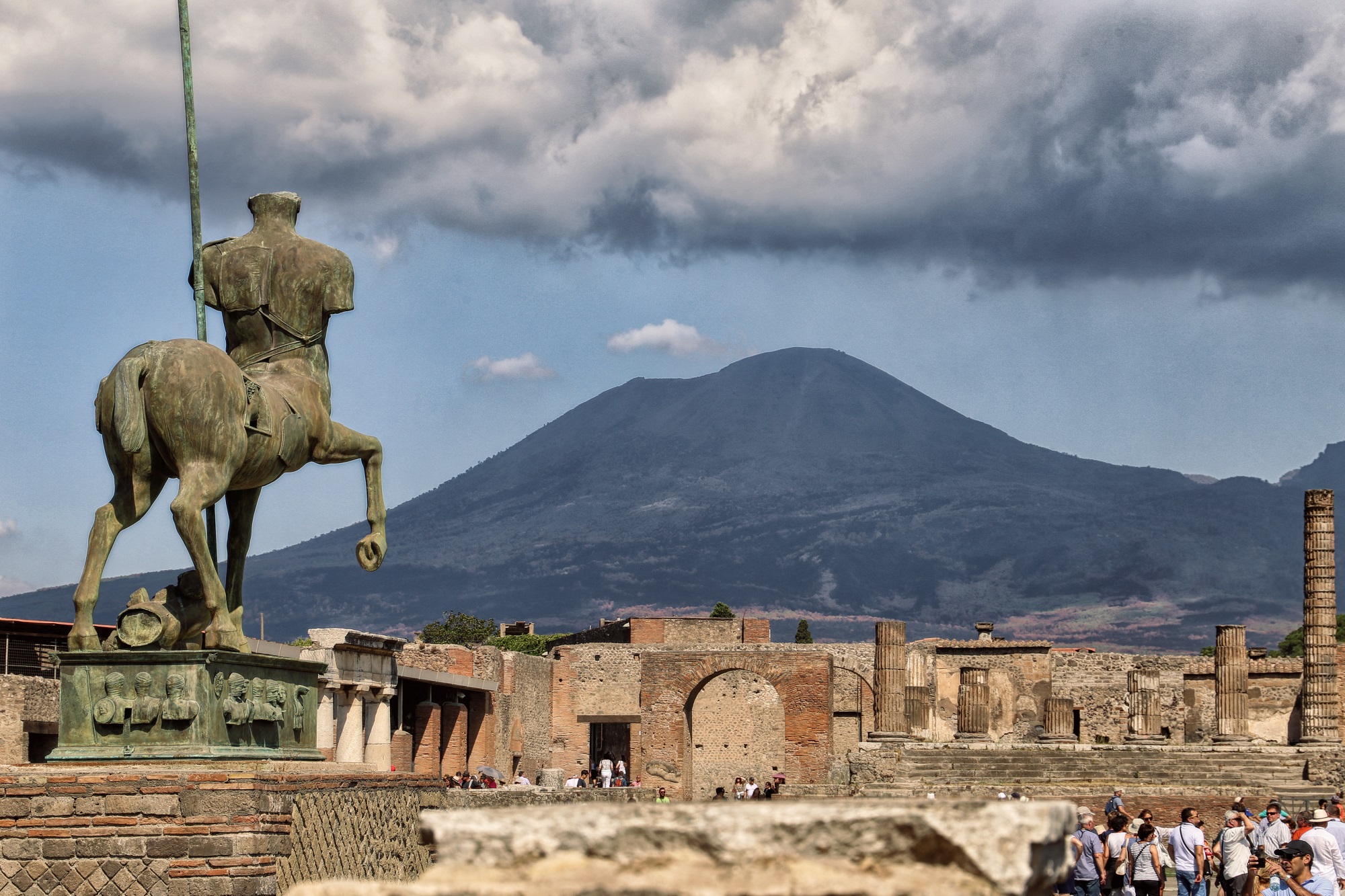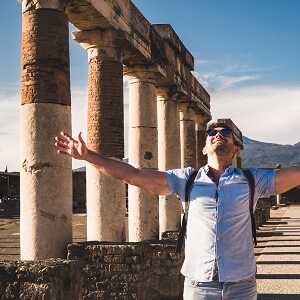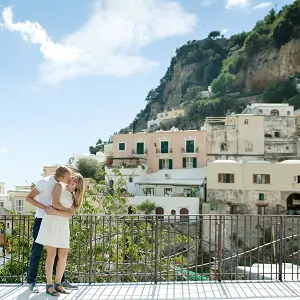Opening a window into the ancient lives of the Romans, Pompeii’s ruins are incredible to behold. Stopped in its tracks almost 2,000 years ago, this once booming city now provides visitors with a fascinating look into the past.
A thriving port town important to the Roman Empire, Pompeii boasts a collection of ruins that illustrate what life was like all those years ago. Before it met its end in 79 AD at the hands of Mount Vesuvius, the city was a fun town with several entertainment venues, many of which you can explore today. Here are the best sights that you can see in Pompeii.
-
The Antiquarium
The museum of Pompeii, the Antiquarium, houses many of the artefacts uncovered during the various excavations of the city. Here you can see vases and furniture and many of the casts of the victims. The human forms are a poignant feature of any visit to Pompeii and offer a fascinating and tragic glimpse into the final seconds of the lives of the inhabitants. These human figures, rather than being preserved remains, are made of liquid plaster. When archaeologists discovered hollows in the volcanic debris, they injected liquid plaster into them. What they extracted were almost perfect models of the victims that revealed their painful last moments on earth.
-
The sprawling streets
The volcanic debris that fell on Pompeii didn’t just preserve the buildings; it preserved the streets too. The roads of ancient Pompeii doubled as drainage systems, and because the city’s inhabitants didn’t want to get their feet wet, they installed stepping stones. These allowed them to cross the road without dipping a toe in the (probably dirty) water. Hop across them yourself and imagine what the roads would have looked like in their prime.
-
The house of the Vetti
Take a stroll around the House of the Vetti to see an example of what a typical Roman mansion would have looked like. With frescoed rooms surrounding a central columned atrium, this house of a wealthy merchant allows you to see how the rich would have lived.
-
House of the Faun
Known as the richest residence of Pompeii, the House of the Faun takes up a whole city block and spreads over 30,000 square feet of space. Built around 180 BC, this sprawling, lavish home contained several floor mosaics, some of which are still in place today (others have been moved to the National Museum of Naples).
The House of the Faun received its name from the bronze statue of the dancing faun that was discovered here. Fauns are mythical half goat-half human creatures that symbolise wildness, vitality, sexuality and nature and it may have been displayed to bestow these qualities on the household.
Walk through the rooms and around the atriums and try to imagine what the home would have been like over two millennia ago.
-
The Lupanar
Brothels were a popular destination for the men of Pompeii and the Lupanar was the largest of them all. When the rooms of this ancient building were discovered, their use became clear from the artwork found on the walls. Erotic frescoes decorated the interior, displaying a ‘menu’ of services to the visiting patrons. Though the decorations were intended to glamorise the services, the lives of the women who worked there were far from glamorous. The prostitutes worked, and possibly lived, in small cells and were kept inside to await the arrival of their next client.
-
The Forum
The main centre for political, cultural and religious life, Pompeii’s Forum was surrounded by various buildings including shrines, temples, and council buildings. See where the politicians would have discussed town matters in the Curia, imagine the markets that would have set up in the Macellum, and walk among the stumps of the columns that would have supported the incredible Basilica.
-
Temple of Apollo
Although it predates the Forum, it is an integral part of it. Dedicated to the Roman and Greek god Apollo and built in the 6th century BC, the Temple of Apollo is the town’s most important religious building. Surrounding the temple are lines of columns, and in between these are replica statues that stand in the place where the originals would have been. If you want to see the originals, then you can find them in the National Archaeological Museum of Naples.
-
Amphitheatre of Pompeii
Capable of holding 12,000 spectators in its prime (over half of the population of Pompeii), this grand amphitheatre would have hosted gladiatorial games and other forms of entertainment. Built-in 80 BC, it is one of the oldest buildings in existence today! Because of its age, historians believe that it could have provided a model for other ancient Roman amphitheatres.
Pompeii’s amphitheatre was carved into the ground, using the earth to support its structure. Because it is dug into the ground, it does not feature the underground networks that you would find at the Colosseum in Rome.
-
Teatro Grande
This impressive theatre could seat an audience of 5,000 and has some of the best views over Pompeii and toward Mount Vesuvius. It had fantastic acoustics and would have been an excellent place to watch musical performances or plays. With this large theatre and huge amphitheatre, it’s clear that the citizens of Pompeii loved to relax and indulge in various forms of entertainment.
Although horrific and devastating, the ash that fell on the city sealed the buildings and their artworks in an air-tight tomb, allowing them to survive for thousands of years. If you’re not sure how to best navigate the various sights of the city then booking on to a tour will provide you with excellent information told by a knowledgeable guide.
Related article: Amalfi Coast Transportation Guide
Explore the Pompeii Tours
-
Pompeii Tour from Rome
12 Hours
€152
See More -
2 Day & 1 Night Pompeii, Sorrento & Capri Tour
2 Days
€590
See More -
Pompeii & Vesuvius Tour from Sorrento
8 Hours
€120
See More -
Pompeii & Vesuvius Tour from Naples
8 Hours
€115
See More





